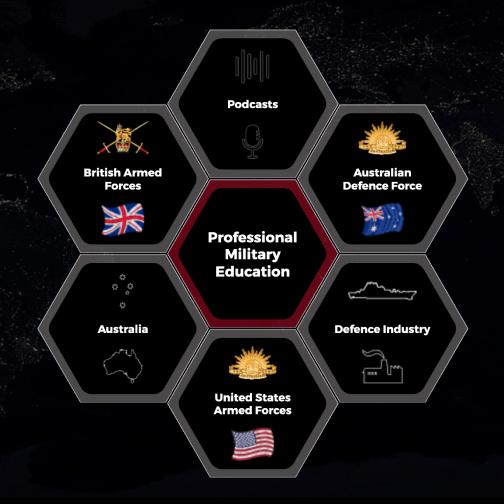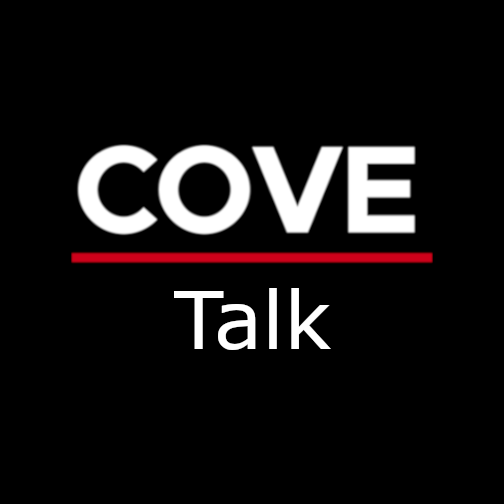The integration of artificial intelligence (AI) into military organisations presents a transformative opportunity to enhance efficiency, reduce administrative burden, and improve decision-making across a range of functions. For Army (and Defence writ large), where operational tempo and resource constraints often challenge the timely and accurate completion of routine administrative tasks, AI offers a compelling solution. By leveraging AI to support routine administrative or clerical tasks, Army can unlock significant productivity gains, improve the quality of outputs, and ensure more informed and equitable decisions. This paper will discuss three areas where AI can be quickly applied to streamline processes with little or no cost: the production of standard capability management artefacts, personnel management for selection boards, and the conduct of routine administrative inquiries. In an operational environment, AI can help to increase tempo and decision superiority by enhancing the efficiency and effectiveness of staff planning.
One of the most promising applications of AI in Army is in the production of common capability management artefacts, such as sponsor’s papers, cabinet submissions, and project placemats. These documents are often dense, requiring the synthesis of large volumes of information from disparate sources, including emails, presentations, spreadsheets, and previous submissions. AI engines, trained on existing artefacts and guided by high-quality instructions, can ingest this material and generate draft documents that reflect established formats, tone, style, and content expectations. This capability significantly reduces the time spent creating documents from scratch, allowing staff to focus on refining and validating content rather than assembling it. Furthermore, AI can incorporate feedback from previous iterations, highlight proposed updates, and identify equities and dependencies that might otherwise be overlooked. For example, when preparing a submission for a capability committee, AI could interrogate a work area’s equities in the artefact, flag potential concerns or overlaps with other projects. Similarly consulted work areas can generate briefs for senior leaders considering proposals outlining risks, opportunities, and dependencies. This not only improves the quality of submissions but also enhances transparency and strategic alignment across the organisation.
In the field of personnel management, AI offers substantial benefits for processes such as selection boards. These boards are tasked with evaluating large volumes of appraisal reporting, often across multiple years and supervisors, to determine the relative merit of nominees for promotion or appointment. AI engines can ingest, compare, and consolidate this data, accounting for desired profiles, the relative weightings of supervisors, and identifying discrepancies that may warrant further interrogation. For instance, if a nominee has received consistently high ratings except from one particularly critical supervisor, AI can flag this as an outlier for board consideration. Additionally, AI can summarise relative profiles for nominees, including strengths, weaknesses, opportunities, and potential career pathways, providing an unbiased assessment of merit. This supports the chair of the selection board in critically examining the views and opinions offered by board members, who may hold unconscious biases. Alternatively, if the chair is the only person with access to the full AI-generated profile and visualisation tools, they are uniquely positioned to identify potentially biased positions across board members that may not align with the objective data set. This independent check could enhance the integrity of the selection process and support more equitable and defensible outcomes.
Routine administration in units, such as fact finding, consumes substantial amounts of managerial time and often suffers from inconsistent quality due to time pressures and varying levels of experience and expertise among officers and non-commissioned officers. AI can play a pivotal role in improving the conduct of administrative inquiries by providing structured guidance and analytical support. With high-quality instructions, AI can outline key considerations, establish thresholds for proof, and generate properly phrased questions for witnesses to avoid bias. It can also identify gaps in information, prompt fact finders for further investigation, and suggest potential recommendations – whether disciplinary, procedural, or administrative – for consideration. This capability is especially valuable given the challenges of conducting high-quality inquiries within short timeframes. By accelerating the information-gathering process and improving the veracity of findings, AI enhances decision-making and reduces the risk of procedural errors. Moreover, AI can generate draft documents, such as reports or decision briefs, that would otherwise require substantial time and effort to produce, freeing up commanders and staff to focus on operational priorities.
AI also holds significant promise in accelerating and simplifying operational military planning. Planning staff are often required to synthesise vast amounts of intelligence, doctrine, statistics, operational analysis, and historical literature to produce relevant and insightful plans that stand the best chance of delivering victory. Using AI, commanders and their planning staff can interrogate these large datasets to generate detailed and focused intelligence summaries, including imagery, rich pictures, and modified mapping. With high-quality inputs such as a commander’s visualisation and instructions on formulating courses of action, AI can generate military plans and decision support products that can be manipulated, amended, and adjusted as required. It can ingest artefacts from contributing and support planners to identify potential risks or problems requiring further solution and recommend options to mitigate or treat them. Furthermore, AI may be able to generate supporting products such as synchronisation matrices, course of action sketches, and logistics expenditure tables – products that traditionally consume significant time before informed decisions can be made. With high-quality instructions, AI can compare and contrast plans against a commander’s priorities and visualisation to recommend selections or amendments and highlight risks and opportunities for consideration. This could help in generating tempo and improving decision superiority by unlinking potentially biased human thinking with dispassionate interrogation by AI.
In conclusion, encouraging the adoption of AI across key Army functions offers a strategic advantage in streamlining processes, improving decision quality, and reducing administrative burden. In capability management, AI can automate the generation of complex artefacts, incorporate feedback, and identify hidden dependencies, enhancing the quality and efficiency of strategic submissions. In personnel management, AI provides an unbiased and data-driven assessment of nominees, supporting fair and transparent selection outcomes against stated priorities. In routine administration, AI improves the conduct of activities such as fact finding by guiding inquiry processes, identifying gaps, and generating high-quality documentation. Collectively, these applications demonstrate the potential of AI to transform the way Army operates, enabling a more agile, informed, and effective organisation. Even in the conduct of military planning, AI can support the generation of detailed plans and artefacts, identify risks and opportunities, and create draft staff products that interpret the commander’s intent, thereby improving planning efficiency and effectiveness. As AI technologies continue to evolve, their integration into military processes will be essential to maintaining tempo in an increasingly complex and data-driven environment. In fact, this article was produced using AI.
Prompt: Act as an academic specialising on the benefits of using artificial intelligence in an organisation or company. Write a 1,000 word essay on the potential uses for AI in Army to streamline existing processes.
Allocate a paragraph to the use of AI in producing common capability management artefacts, such as sponsors papers, cabinet submissions, and project placemats. Describe how having AI ingest existing artefacts such as emails and presentations, would potentially reduce the amount of time spent creating documents from scratch. Describe how high quality instructions can allow AI to incorporate feedback, highlight proposed updates, or identify equities and dependencies that might otherwise be overlooked. Include how AI might help in interrogating a work area’s equities in artefacts presented for committees, and generate briefs for senior leaders that outline potential concerns, dependencies, or opportunities that might otherwise go unnoticed if produced from scratch.
Allocate a separate paragraph to the use of AI in personnel management, particularly for selection boards. Describe how AI engines can ingest, compare, and consolidate large volumes of appraisal reporting, including the relative weightings of supervisors. Outline that in doing so, AI would be able to highlight discrepancies that might require interrogation or consideration (such as outliers or particularly critical supervisors), summarise relative profiles for nominees (including strengths, weaknesses, opportunities, and potential pathways), provide an unbiased assessment of relative merit, and afford the chair of selection boards an independent check of the views and opinions offered by board members. Identify that, particularly if the chair is the only person with the full AI profile and data set including visualisation tools, this would allow the chair to critically examine the provisional positions and potential biases of board members in deliberations.
Allocate a separate paragraph to the conduct of routine administration in units that often consumes substantial amounts of managerial time, such as fact finding. Describe how, with high quality instructions, AI may be able to outline key considerations, particular facts to be established, thresholds for proof, and properly phrased questions for witnesses to avoid bias. Describe how AI might also identify gaps in information, prompt fact finders for further investigation, and identify potential recommendations (including discipline, procedural, or administrative) for consideration. Include that AI may, given the challenges for officers and non-commissioned officers to conduct high quality administrative inquiries or fact finding in short periods of time, greatly include the speed and veracity of such information gathering to improve decision making. It may also generate draft documents that would otherwise take substantial amounts of time.
Allocate a separate paragraph to the use of AI to accelerate and simplify military planning. Highlight how AI can greatly increase the efficiency of planning staff by leveraging vast amounts of doctrine, statistics, operational analysis, and historical literature. Describe how AI can interrogate large amounts of information to produce detailed, focussed intelligence summaries and imagery, include rich pictures and modified mapping. Describe how AI might take high quality inputs such as commander’s visualisations and instructions on formulating courses of action to generate military plans and supporting concepts that can be manipulated, amended, and adjusted. Describe how AI could ingest artefacts from contributing planners and identify potential risks or problems requiring further solution, as well as recommend options to mitigate or treat them. Describe how AI may be able to generate artefacts like synchronisation matrices, course of action sketches, and logistics expenditure tables that can often increase the amount of time required before orders can be released. Outline how AI may be able to, with high quality instructions, compare and contrast plans against a commander’s priorities and visualisation to recommend selections or amendments, and highlight risks and opportunities for consideration.
Write and introductory and concluding paragraph incorporating these three major arguments.










Noduff: please drop me a line.